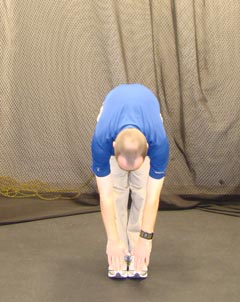The quest for consistency is at the top of the list of most people we see in our offices. When we talk with golf instructors, consistency is on top of the list for their students as well. “If I could only be more consistent with my ball striking…” or “If I were more consistent in my scoring…” or “Consistency is the one thing that would help me be a better golfer and make me happier…” These are the things we hear all the time, every day, from nearly every person we come in contact with over the weeks. These instructors that we speak with and work with seem to agree that stable posture is one of the keys to consistency.
Consistency seems to be the hardest improvement for most amateur golfers in our estimation. Consistency, whether in ball striking, accuracy, ball flight pattern, scoring, putting, chipping or contact is something that when improved will help a golfer play better golf and feel better about their play and ability. Why is consistency seemingly so hard for most of us to achieve? Is it lack of practice, poor understanding or concept of how to be consistent, or wait, could it be something physical?

At FitGolf, we did a study on consistency a few years back. What we found astounded us. Here is the summary: Golfers who can touch their toes are much more stable over the ball than golfers who cannot. The data showed that golfers who are able to perform a full toe touch will see average changes in posture of about 5 degrees with strong statistical significance, and golfers who cannot touch their toes will see average changes in posture of 18 degrees with strong statistical significance.
Let’s recap. Golfers who can touch their toes are more stable throughout the golf swing than golfers who cannot touch their toes. Ok, so if I can touch my toes, I will be more stable and as a result, more consistent? Absolutely! Seems too good to be true? We have the data that proves it.
Let’s look at a toe touch. It involves bending over and keeping your feet together and your knees straight and actually touching your toes without bouncing or much effort to get there. It involves several key areas of the body: hamstrings, calves, hips, glutes, abdominals, and spine, and one other thing…we call that pattern. Pattern is being able to ask for a movement and get all the muscles working properly with good mobility in the joints so that you can just do the movement.
If any of those areas are tight or weak or not working correctly, you will not be able to touch your toes, and will also have stability issues and consistency problems in your swing.
Remember if you can touch your toes, the data says you will be more consistent.
If you try these exercises and you find them to be too challenging or uncomfortable, do not continue, until you have consulted with your physician. All exercises for golf should be customized to your needs after a proper evaluation.
Come In and See Us
Want to take your golf to the next level? Our FitGolf® Trainers are experts at working one-on-one with you to tailor a training program to meet the specific needs of your body and help you achieve the results you are hoping to see in your golf.
Want More Resources?
Looking for more exercise resources, blog posts or monthly golf-specific exercise content sent straight to your inbox?
